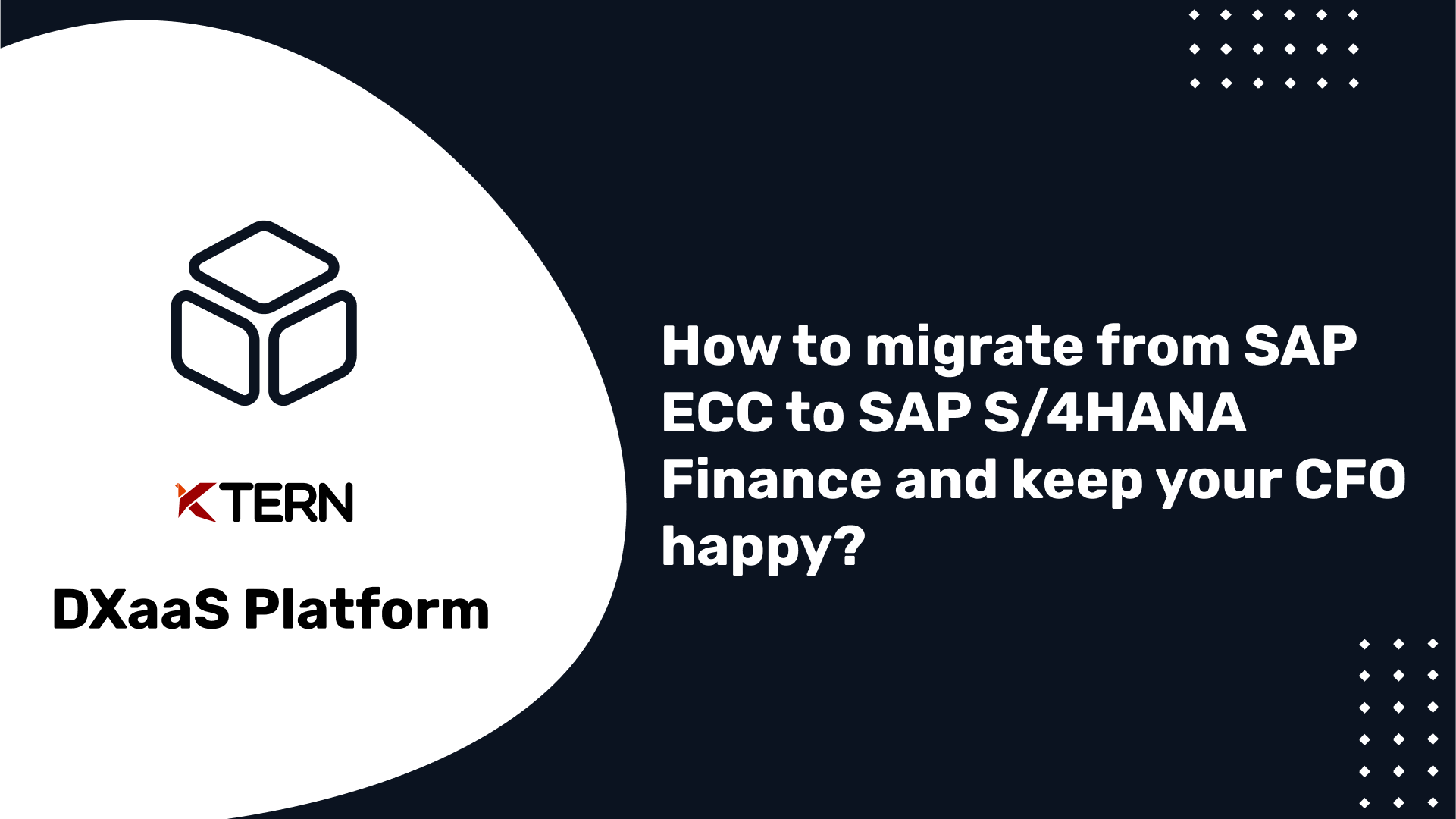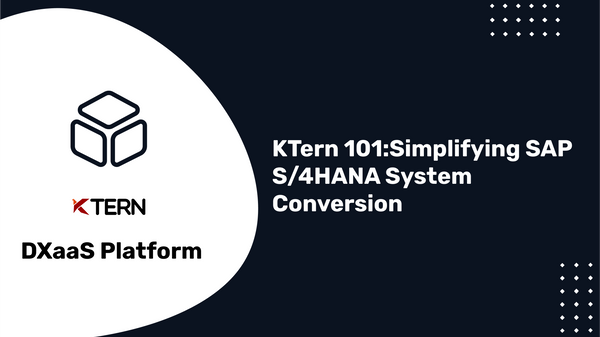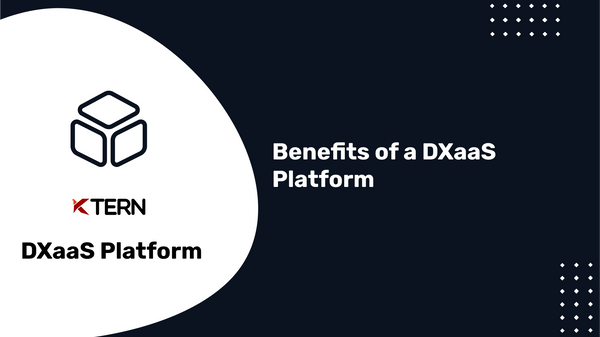How to migrate from SAP ECC to SAP S/4HANA Finance and keep your CFO happy?
Table of contents

Introduction
We are now in the new era of digital transformation and new business models based around Cloud, Analytics, Mobile and Social. ERP core and systems of record are still essential, but they need to be transformed into a digital core.
Many organizations feel that the old SAP ERP can be viewed as an inhibitor. SAP’s response is SAP S/4HANA, and this new generation ERP can be deployed in a rapid but phased approach.
What are the benefits of SAP S/4HANA?
A Single Source Of Truth
-
A Single Source Of Truth for moving period-end finance processing, such as Goods Receipt/Invoice Receipt (GR/IR) clearing, cost allocations and FICO reconciliations, from batch to real-time.
-
The speed and online availability are achieved using the in-memory functionality within SAP S/4HANA and the reduction of the aggregation tables
2. Innovative rapid planning and forecasting
-
Innovative rapid planning and forecasting combined with predictive analytics to explore new business models and immediately assess potential effects on the bottom line.
-
This functionality particularly caters to the new role of the finance function – value generation through data insight and data intelligence .
3. News Reporting and Analytics
-
News Reporting and Analytics capabilities for finance users with self-service access to virtually all information, allowing instant insight-to-action.
-
historical data can now be used for predictive analysis – with reports and dashboards available on mobile devices
4. Global Regulatory Compliance
Global regulatory Compliance across currencies, languages and industries with built-in legal compliance management capabilities and continuous risk assessment.
5. Cost Efficiency
Cost Efficiency for reduction in data base size linked to the table aggregation, helps reduce storage costs.
A good approach to adopt SAP S/4HANA would be to start with SAP S/4HANA Finance. In a phased approach, you can then let SAP S/4HANA take over the functions of the SAP ECC core. Although covering key functionalities such as universal journal, appendix ledger, new asset accounting and an accelerated close, SAP’s S/4HANA Finance solution is primarily about creating a simplified user experience and access to real-time data. This addresses many of the pain points raised by CFOs.
Why SAP S/4HANA Finance
SAP S/4HANA Finance is a robust solution powered by SAP HANA for the CFO office. It provides instant insights with on-the-fly analysis across practically all dimensions of financial data. In addition, the new HANA data model removes system limitations linked to data aggregation. It offers an intuitive user experience and the migration to SAP S/4HANA Finance is non-disruptive.

The SAP S/4HANA Finance solution implementation redefines data aggregation and indexing using the in-memory capabilities of SAP HANA. This allows financial transaction calculations to be performed on an ad-hoc basis.
The new capabilities introduced with SAP S/4HANA Finance solution redefined the finance and controlling modules within SAP:
1.Universal Journal
- This is SAP’s new definition of “single source of truth” with a new simplified data model. This data model combines financial accounting and managerial accounting into one universal journal entry, represented in a one-line item table with full details for all components.
Since all the data is provided in near real-time from the universal journal, the effort around period-end reconciliation is expected to be reduced.
2. Ad Hoc Capablities
- The new universal journal allows ad hoc and on-the-fly computations for converting periodic transactions. This means that month-end activities move from batch to real-time, without needing data to be replicated first to other systems like business intelligence.
Reporting is simplified, fast and multi-dimensional, making the ‘drill-down’ report almost redundant.
3. Accelerated Financial Close
-
The ability to move away from batch - to event-based processing helps enable a soft close so that period end processes can run on a daily or weekly basis.
-
This process will allow organizations to get a real-time view of their P&L, providing the business with early visibility of emerging trends.
Prompt remedial action will be accessible where necessary, rather that the need to wait until after month end.
4. Integrated Business Planning in ECC
- New, user-friendly processes are added to facilitate planning in Excel with near real-time data and the loading of plans back to ECC for reporting (with templates for cost center, internal order, project, profit center, cost of sales, and P&L planning).
5. New Asset Accounting
-
The new asset accounting module makes it possible to manage parallel valuation of assets using the ledger and accounts approach.
-
Depreciation areas are no longer required to record the leading valuation in the depreciation areas, making this functionality more flexible.
Posting are also now real-time across all valuations.
6. Smart Cash Management
-
This is an optional replacement for cash and liquidity management.
-
It adds bank account management and short-term liquidity planning, allowing for tighter cash management and for optimizing working capital.
7. Smart Financials Reporting
- There are further optional replacements for many of SAP’s traditional “drill-down reports”. Unfortunately, the code framework used by the previous ECC reports isn’t necessarily faster even with the new HANA database.
How to Migrate?

Dependent on the “as-is” landscape, there are several HANA adoption scenarios to get to the end state of SAP S/4HANA Finance.
KTern.AI SAP Migration
Assuming a migration scenario is the logical progression, clients who are currently running on SAP ECC6, on any HANA or non-HANA data base, would have to move to SAP S/4HANA. The enablement of the S-Innovations such as S/4HANA Finance solution would be the next step. Dependent on the landscape, there are different approaches for migration from the SAP ECC6 system running on non-HANA database to the SAP S/4HANA environment.
There are five possible upgrade and/or migration paths that are available to move from an ECC6 system running on a non-HANA data base to S/4HANA with S/4HANA Finance.
- Greenfield/re-implementation
- Upgrade and migrate
- HANA Migration
- S/4HANA enablement
- Replicate into a central finance

For all the following scenarios there is a further option of on-premise (cloud be private cloud) or SAP’s public cloud offering for S/4HANA.
1. New Implementation to S/4HANA
-
For a complex heterogeneous landscape with older versions of SAP, a new, consolidated S/4HANA implementation may be more efficient than a migration.
-
SAP Activate Methodology and other acceleration can support this S/4HANA adoption scenario.
-
Default position would be to start with S/4HANA unless there is an industry or line of business solution limitation, in which case an interim starting point of Business Suite on HANA
2. Pre ECC6 Enhancement Pack 7, Non-HANA DB-two-step approach
-
EHP upgrade and technical data base migration to HANA as combined upgrade, assuming downtime window is achievable for cutover. Alternative is to separate these two activities. “Hanatization” of relevant custom code (code correction) required as part of this project
-
Separate enablement of S/4HANA Finance solution post migration to HANA data base on stability of availability of S-Innovations required to address business or IT requirements – Consider change management requirements and industry or line of business solution limitations.
-
Default position would be to start with S/4HANA unless there is an industry or line of business solution limitation, in which case an interim starting point of Business Suite on HANA
3. ECC6 Enhancement Pack 7, Non-HANA DB-two-step approach
-
Technical data base migration to HANA and “Hanatization” of relevant custom code (code correction) is required as part of this project
-
Separate enablement of S/4HANA Finance solution post migration to HANA data base on stability of availability of S-Innovations is required to address business or IT requirements – Consider change management requirements and industry or line of business solution limitations
4. Separate S/4HANA system with Central Finance
- Install a new S/4HANA system and use data replication to move finance data from other SAP (and non-SAP) systems to get some benefits of S/4HANA Finance solution. Not all finance functionality will be available on the central finance systems, and there needs to be process and data harmonization across the source systems, but some finance benefits can be achieved at reduced risk
For the Upgrade Migration scenarios above, Modernization/Optimization of remaining custom code (or move of some custom code to HCP applications) would be a separate activity, possibly driven by other business change or transformational requirements.
For new implementations, HANA enabled Custom Code (or development of some application extensions in HCP) would be default assumption.
For all scenarios above, build a roadmap on how you will align with incremental availability of S/4HANA functionality going forward.
Note: While the functional enablement of SAP S/4HANA Finance solution can be included in the same change window as the technical upgrade and data base migration, it is recommended to keep the activities separate due to complexity, risk and the increased downtime requirements. If two downtime windows are not acceptable, SAP provide a new Near Zero Down Time (NZDT) service, available with S/4HANA Finance 1508 and above versions, that will allow customers to perform all activities (upgrade, DB migration and S/4HANA Finance migration) in the same downtime window.
| KTern.AI can help streamline this process by providing |
|---|
| Automated data migration |
| System testing and validation |
| Configuration management |
| On-going support and maintenance |
Under all approaches, post the upgrade, most code is expected to work as normal. However, custom code that is data base dependent may have to be remediated. As part of S/4HANA Finance solution enablement, the new fixed assets and new cash management functionalities need to be enabled and configured.
Schedule a guided demo for an express session on the role and value of KTern for SAP S/4HANA Conversion and a demo of the All-in-One SAP S/4HANA Conversion Accelerator.




